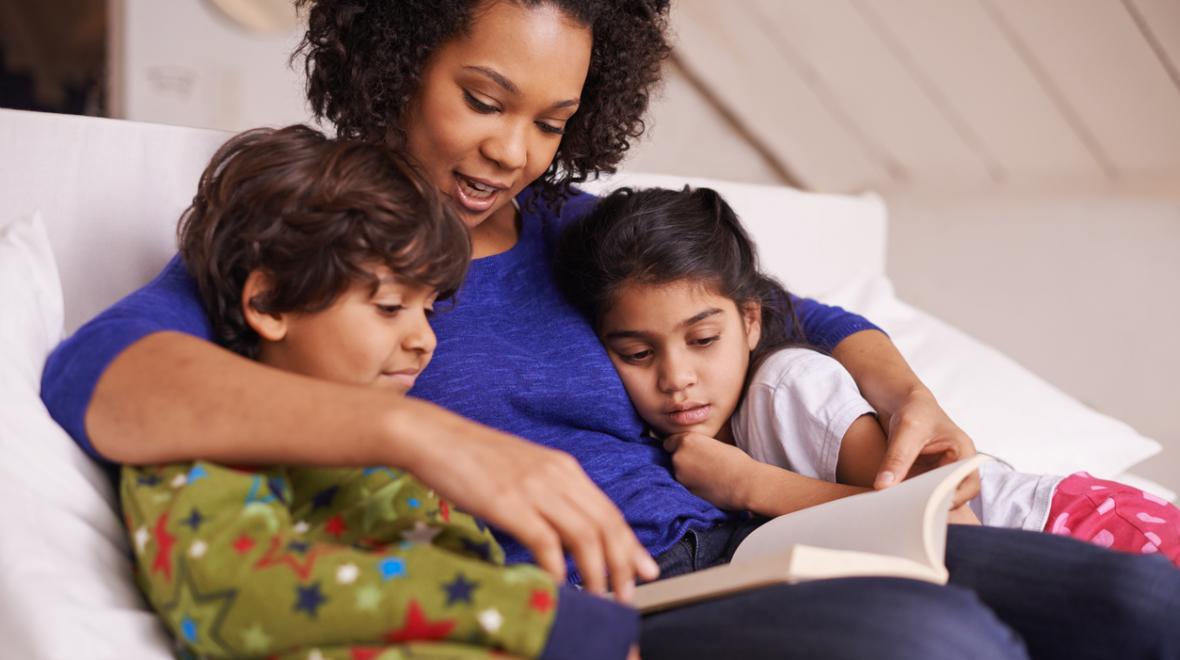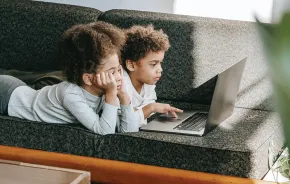
If the #MeToo movement has taught us anything, it’s that no corner of society is safe from sexual harassment and assault. As more people have come forward to out their harassers, creators of everything from popular television shows and blockbuster movies to chart-topping music and books have come under fire. Sadly, children’s authors are no exception. In February, the first wave of accusations against beloved figures in kid lit went viral. That was just the beginning.
Sherman Alexie’s “Thunder Boy Jr.” is among my preschooler’s favorite books so I was saddened to learn of recent harassment allegations against him. I had just finished reading one of my favorite childhood series, Lemony Snicket's “A Series of Unfortunate Events," when I learned that he, too, stands accused. It goes on and on. Many movies that were teen favorites of mine either star a harasser or celebrate harassment ("Ghostbusters"), assault ("The Sandlot") and even rape ("Revenge of the Nerds"). Sexism, homophobia, ableism and racism are rampant as well.
As a mom I care very much about the messages I’m sending my kids through the media. Kids look up to people in power. In the wake of so many allegations, how do we engage with arts and entertainment when the creator of said work is problematic or abusive? What’s a conscious parent to do?
Here are eight strategies for addressing this issue in your home.
1. DO think about it
Ask yourself if/how you can engage with these works in a way that aligns with your values. Censorship is a complicated issue with a complex history. Consider the issues thoughtfully before you come up with a policy about what books you will or won’t read in your home. Revisit your values each time a new book or movie comes into question and work to ensure that as your kids grow older they learn to develop their own sense of values around how they will engage with problematic works.
2. Rethink what ‘classic’ means to you
Just because a work was important to you as a child doesn’t mean it’s appropriate for your child to read now. I loved “Little House on the Prairie” when I was a kid, but was shocked by the many elements of sexism and racism in the book as an adult. I didn’t quit reading the "Little House" series to my kids, but it did spark important conversations about how times have changed and the importance of diversity, inclusion and fighting for social justice. Now, my older girls have learned to point out themes they find troublesome and to start conversations about their concerns.
3. Seek out fresh voices and perspectives
Amplify the voices of the marginalized and underrepresented, and seek out diverse protagonists. For starters, there are many amazing children’s books written by women of color. My favorites include Jacqueline Woodson’s “Brown Girl Dreaming,” Sharon Draper’s “Stella by Starlight,” Thanha Lai’s “Inside Out and Back Again,” Pam Munoz Ryan’s “Esperanza Rising” and R.J Palacio’s “Wonder.” Check out this great list of Native American children’s authors. These are just a few. You can ask your child’s school librarian for other suggestions or check the “A Mighty Girl’” website for more ideas.
4. Discuss what’s problematic with a work as you encounter it
Discriminatory messages are everywhere. You can’t ignore them, so you’ll need to combat them. Decide what’s worth completely removing from your home, and what you can still allow but will need to closely monitor and discuss with your kids. For instance “Monster High” is out at our house, but “The Thundermans” is not.
5. Don’t (always) throw the baby out with the bathwater
Humans are by definition flawed, even (especially?) some of history’s most inspirational leaders, from Martin Luther King, Jr. to Ghandi to Thomas Jefferson. We can recognize what flawed leaders have accomplished and contributed to society and still we MUST discuss (as is age appropriate) the disparities between the good someone did in one area of their lives and the tremendous harm they did in another. It’s a great opportunity for a lesson with kids, because they too may have tremendous capacity for kindness in one area and cruelty in another (siblings, anyone?).
6. Understand who benefits when you buy
If you know an abuser STILL profits from your purchase, think twice. It’s one thing to engage with the work of someone who is no longer living. It’s quite another to continue to buy items when you know they directly benefit an abuser or harasser.
7. Pass the baton
At some point our kids will have to make decisions about what they read or watch without parental supervision. To prepare them to do this well, share your values early and often. Talk about consent and respect their bodily autonomy. Call out harassment if and when you see it (in media and in everyday life.) When our kids see us living our values, they will too.
8. Finally, stay positive
If you follow the news closely, it it can feel like there’s nothing left to watch or read that’s untouched by harassment, discrimination and abuse. That, I’ve realized, is part of the problem. It’s simply not true. There are so many underrepresented voices who are creating art that ignites and inspires. It’s up to me as a parent to do the work to find it, support it, and promote it. It’s up to you, too.
Resources and book lists |











